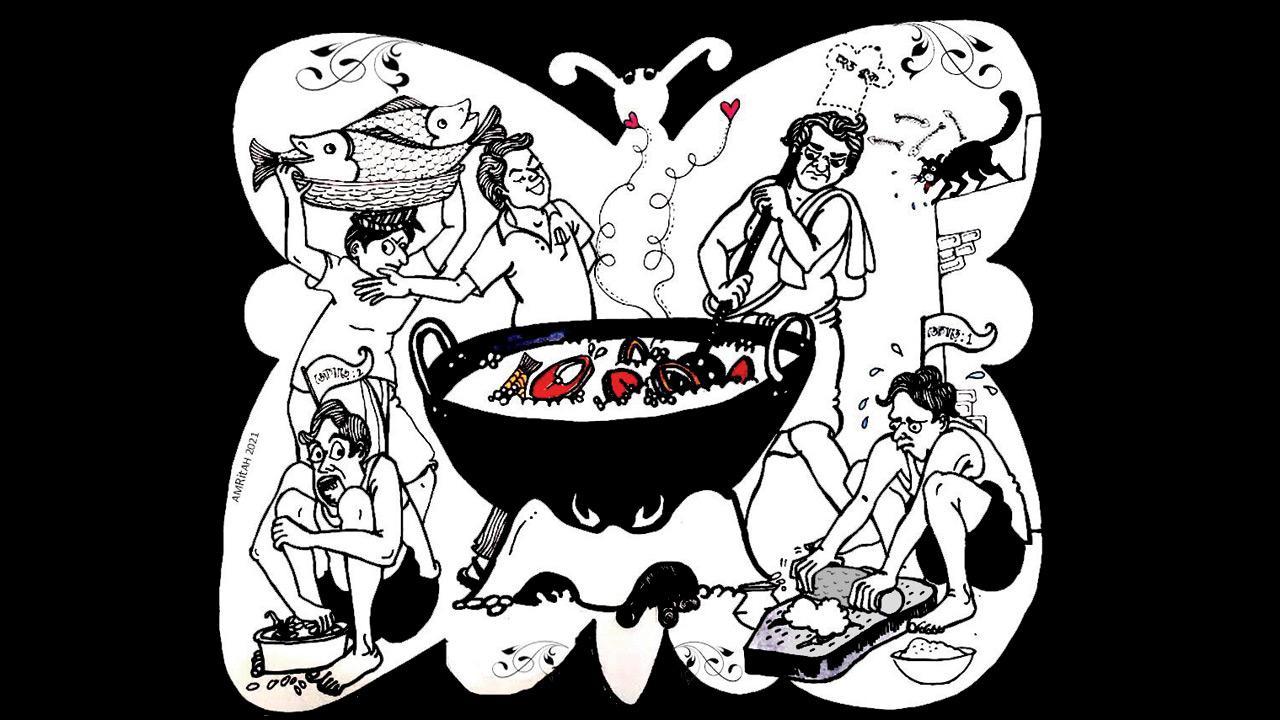Home / Sunday-mid-day / / Article /
‘Food, by its very nature, is messy’
Updated On: 08 August, 2021 08:57 AM IST | Mumbai | Jane Borges
Two food-loving academics are editing a new genre-agnostic multi-lingual online journal where contributors will celebrate their relationship with food through long-form essays, poetry, films, and short stories

An illustration by Amritah Sen for the inaugural essay, The Tales of Sri Sri Bhajahari Radhuni by Manoranjan Byapari
Long before the multi-hyphenate Manoranjan Byapari became a “lekhak”, he was many other things, including a servant boy at a tea shop, waged labourer at a sweet shop, and the main man at marriage ceremonies, doing everything from cooking, drawing water from the tube well and filling it in the drum, to grinding spices with a mortar, and washing banana-leaves and earthen glasses. It’s while absorbing the sights and sounds of these experiences that Byapari, who is now a first-time MLA in the new West Bengal assembly, developed a relationship with food.
His story gets a fitting place in the inaugural issue of the multilingual genre-agnostic food and eating journal, On Eating (oneating.in), edited by poet-author Sumana Roy and writer Kunal Ray. “I think his essay [The Tales of Sri Sri Bhajahari Radhuni] is one of the best essays written by an Indian, and I hope it will be read by many,” says Roy, who currently teaches at Ashoka University.



